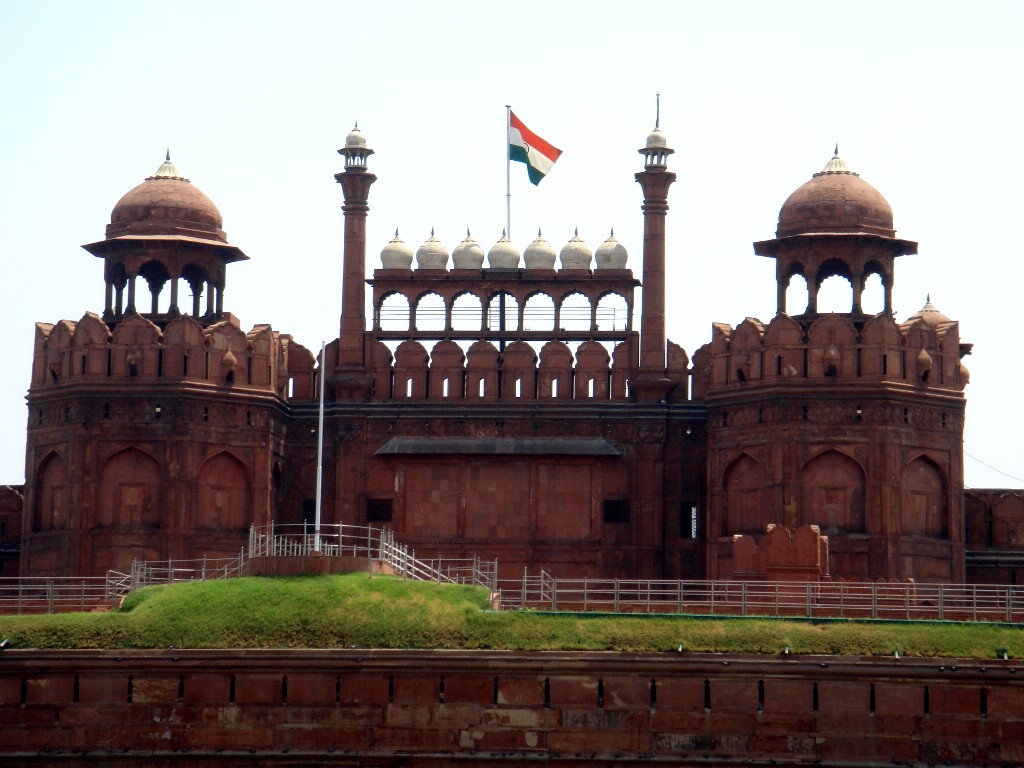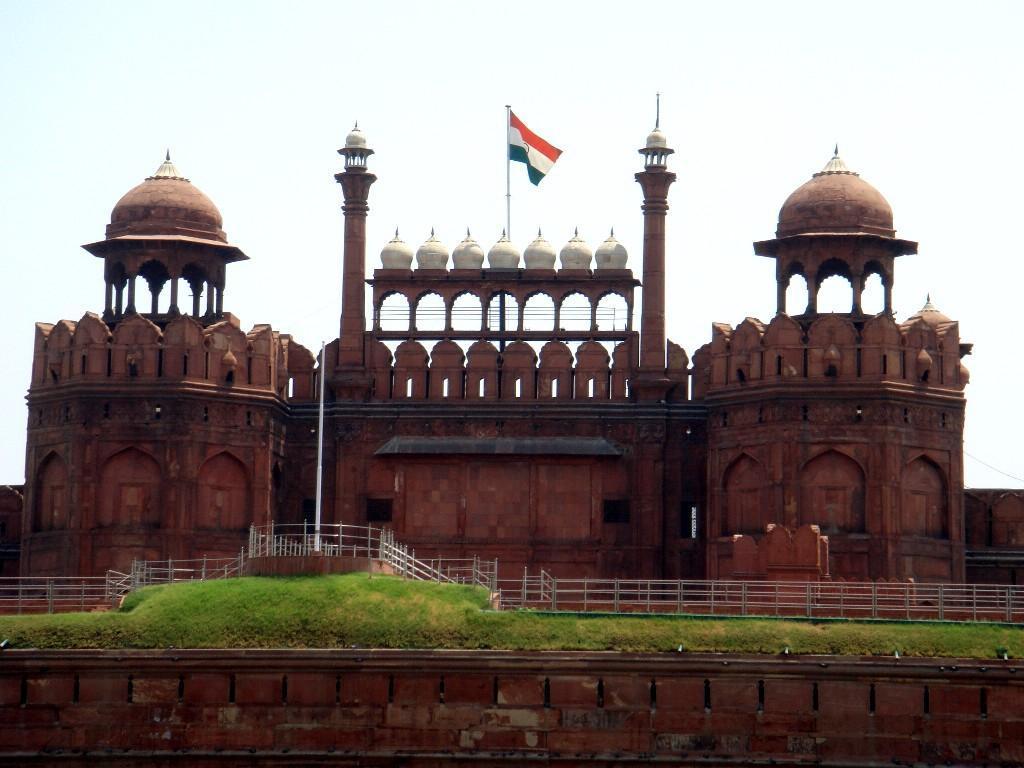During tours to India one of the places to visit – if your itinerary includes Delhi – is the Red Fort monument . Delhi also happens to be the beginning point for one of the most popular tourist circuits in India, golden triangle tours – which includes Jaipur and Agra to form the three destinations. One of the must visit places in Delhi to understand its history is Red Fort. It is the largest monument in Delhi and an epitome of the rise and fall of mighty empires. With a significant place in the history of Mughal Empire’s high point and inevitable fall, this massive monuments chronicles many a tales and anecdotes of the Mughal era intrigues.
.jpg) |
| Delhi Gate of the Red Fort, Delhi. This is a photo taken during the period of British Raj |
Red Fort, a UNESCO World Heritage Site in India, is one of the oldest and dazzling monuments attracting thousands visitors every year. Built during the reign of Mughal Emperor Shah Jehan, it formed the core of the walled city of Old Delhi. The last Mughal emperor to occupy the fort was Bahadur Shah II “Zafar”. Despite being the seat of Mughal power and its defensive capabilities, the Red Fort was not defended during the 1857 uprising against the British.
Red fort in Delhi is a major tourist attraction and a must thing to do during tours to India. The mighty citadel of Red Fort was built by the 5th Mughal emperor Shah Jahan during 17th century and laid the foundation of the seventh city of Delhi, Shahjahanbad. Red fort, also known as Qila-e-Mubarak was the transferred capital of Shah Jehan from Agra to Delhi. It served as the residence for the royal family members and is a major cultural and historical places in and around Delhi.
| Diwan-i Khas, Red Fort, Delhi, India |
A very interesting fact regarding the construction of the Red fort is that it was started and completed on same day of the same month (16th April, 1639 to 16th April, 1648). It took 9 years to build this massive fort. Red sandstone was used extensively to build the fort leading to its popular name, the Red Fort. It was adjacent to the defense fort of Salimgarh build by Islam Shah Suri in 1546 with which it forms the Red Fort complex and lies along the bank of river Yamuna. The Red Fort was declared a ‘UNESCO World Heritage Site’ in 2007.
Red Fort stands on the zenith point in the history of Mughal Architecture. The outskirts of its strong walls are about 2.41 Kilometers. The art work in the fort is a striking blend of Persian, European and Indian Art. The two main Gateways of this fort are Lahore Gate on the west and Delhi Gate on the south respectively. The main entrance is the Lahore Gate. The western gateway is bordered by the arcaded apartments leading to the palaces known as the Chatta Bazaar popularly known as Meena Bazaar in the Mughal times, the shopping paradise for the Ladies.
Major attractions inside the Red Fort, Delhi
Diwan-i-Aam (Hall of public audience) is a rectangular hall, three aisles deep, with a fascia of nine arches. It originally had a courtyard in the front and was luxuriously ornamented with gold and silver stucco work. This is where the Mughal emperor used to hold public meetings.
Diwan-i-khas (Hall of private audience) is a highly ornamented pillared courtyard engraved with many precious stones. It was made for meetings with court members, dignitaries and nobilities. Its marble dice is said to have supported with a famous peacock throne taken away by Persian invader Nadir Shah.
Moti Masjid was built in 1659 during the period of Aurangzeb. It was the personal mosque of Aurangzeb. The structure of Moti masjid is of a three-domed mosque carved in white marble.
Hayat Baksh Bag was built in 1842 by the last Mughal emperor Bahadur Shah Zafar lays in the center of the pool where two channels meet.
 |
| A view of the Red Fort Facade. This is the place from where Prime Minister of India addresses the nation every 15th of August, Independence Day of India |
Visitors of the Red Fort also get a chance to retrace the history of its construction and intrigues of royal court of Mughal era during the son-et-lumiere. The show unraveling the history of Mughal era is one of the must do things to understand the cultural and historical importance of this resplendent fort. Although the existing structures are not even one third of the original fort, the ruins and existing buildings stand testimony to the heritage and architecture of Mughal era in India. It is a land mark place in India, the site from where prime minister of India addresses the public on the occasion of 15th August.



Superb blog. You share a grateful information about travel in Delhi. Thanks!